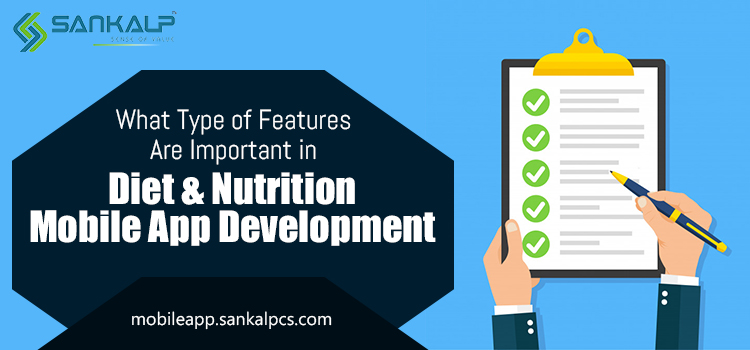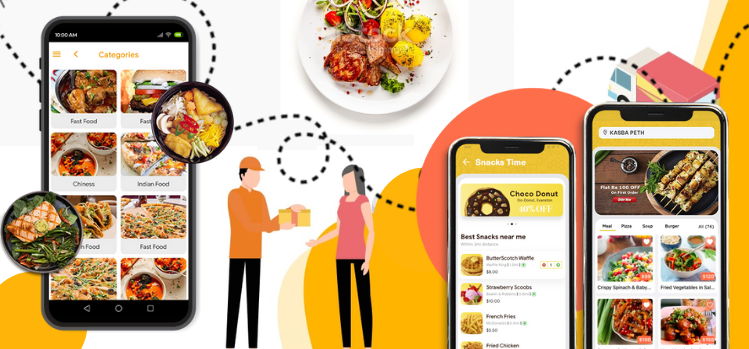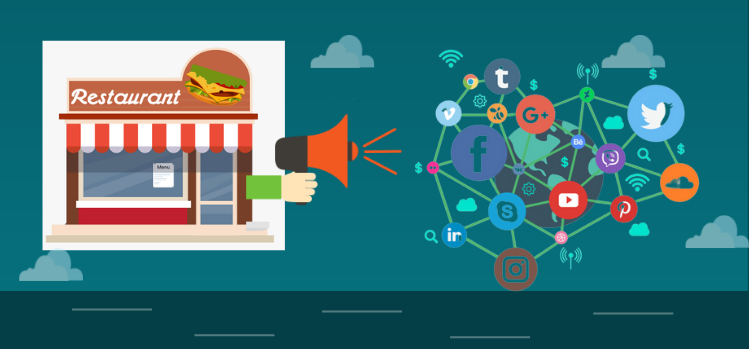There has been a kind of awakening among the people around the world in the last decade or so about the dividends of leading a healthy lifestyle. This awakening became a movement of sort as fast internet coverage became increasingly available throughout the world. Diet and Nutrition Mobile App is playing a vital role in it.

This further got a tremendous boost when apps caught the fancy of an average person. People started to use nutrients apps, diet apps, food tracker apps, weight loss apps, among others, to keep a tab on their health and fitness. The popularity of smartwatches among the urban class, which is essentially a lifestyle gadget, is a testament to the fact that people are ready to pay a premium to remain healthy.
Look at the stats – according to Statista, the obesity rate among 20-year-olds grew from 19.4% to 31.3% from 1997 to 2017 in the US. Also, 47% of high school students were trying to lose weight in 2018.

For an entrepreneur like you, this trend offers a great opportunity to create a diet and nutrition app and help an enormous number of people achieve their well-being goals.
But there are many aspects you should know before going for the diet and nutrition mobile app development. Let’s discuss them one by one.
Who uses diet & nutrition mobile apps?
Diet and nutrition apps are mainly used by health and fitness conscious people across the world.
Statista reveals the following information about users of diet tracker apps:
Among people aged 18 to 29, 26% use meal planning tools regularly.
Among people aged 30 to 45, 17% use meal planning tools regularly.
In other words, we combine the two age bands into one age band of 18 years to 45 years; we find that a whopping 43% of users use diet and nutrition app regularly.
Let’s see some other interesting stats. According to a study published by TranslBehav Med, people use diet & nutrition apps to:
Track physical activity (53%)
Track eating habits (48%)
Lose weight (47%)
Learn to exercise (34%)
Categories of diet and nutrition apps
The four main types of diet and nutrition apps are summarized below:
1. Nutrition
Nutrition apps help monitor calories and keep control of eating habits by providing tips on the nutritional value of foods.
2. Weight loss journals
These apps let the users record meals and water intake, monitor calories burned and consumed, select a fitness program, and monitor its implementation.
3. Calorie counting
Apps in this category are designed for those who control their diet every day, regardless of the purpose.
4. Healthy food recipes
These apps offer a variety of recipes intended to help users create simple, tasty, and healthy dishes to remain in good shape and health.
Read Also: Top Emerging Mobile Trends in a Post COVID-19 World
Essential features in diet and nutrition mobile apps
Depending on the category you have selected, there are crucial features that you should consider incorporating into your diet and nutrition mobile app. Here is the summary of the crucial elements:
- Nutrition Apps
If you are going to have a nutrition app, here are the must-have features:
Calendar: a built-in calendar can help track eating habits daily.
Photos: a nutrition app can recognize food in photos, helping the user find the nutritional value of the food without using the search option.
Calorie counter: this is the mandatory function of any diet and nutrition app.
Diet tips: this function will help those who are looking to keep their weight under control.
- Weight loss journals apps
Below are the essential features to have for a weight loss app:
Dashboard: the app should show a graphical representation of the calories consumed, burnt, and progress in the weight management goal.
Diet plan: the user should be able to create a personal diet plan or set goals for a weight loss program.
Diet suggestions: based on the user profile, the app should offer a diet suggestion that helps in weight loss.
- Calorie counting apps
Below are the features that are essential if you are building an app in a calorie-counting niche:
Calorie counter: this primary function should indicate calorie counts in different foods.
Food log: the users should be able to capture photos and descriptions of food consumed.
Diet suggesting: the app should suggest ways to adjust the diet to moderate the calorie intake.
Bar-code scanner: While shopping, the users should be able to calculate the number of calories by scanning product bar-codes.
-
Healthy recipes apps
Below are the features you must have if your app belongs to the health recipes category:
The database of recipes: the user should be able to access the recipes that are sortable by category, ingredients, and calories.
Ratings: users should be able to add comments and rate the recipes.
Add favorite recipes: users should be able to create their recipes and upload them so that they are visible to all users.
Cost of the diet & nutrition apps
Diet & nutrition apps are one of the fastest-growing categories that users love across the world. People are getting more conscious than ever before about their health and well-being.
A far as the cost of the diet & nutrition apps are concerned, they largely depend on a few factors. The main factors that will determine the price include the functionalities, technology architecture, design of the app, and the operating system of your iOS or Android app.
If you are looking for a top-notch mobile app development company with an impeccable record of delivering 100% on its promises, look no further – Sankalp is an ISO-certified organization that serves clients in more than 45 countries worldwide!
A consultation will not cost you a dime, so don’t hesitate to contact us for a detailed discussion with our specialists and turn your idea into a fascinating diet & nutrition app that the world loves!







Thank you for another informative website. The place else could I am getting that kind of info written in such an ideal way? I have a venture that I’m just now
running on, and I have been on the glance out for such info.